Dental health important to pets
By Dr. Rebekah Frost
Every year at the Dunkirk Animal Clinic, February rolls around and we prepare for one of our busiest surgical months of the whole year, Dental Health Month. Dental health is not only important in people but in your pets as well.
Dental disease can start in pets as soon as their adult teeth emerge at 6 months of age. Signs of dental disease include odorous breath, bleeding gums when brushing or eating, swollen or red gums, build up of tartar, and loose or abscessed teeth. Your pet may exhibit very mild to more severe signs.
Symptoms might include chewing on one side of the mouth, dropping food onto the floor or in the dish when eating, swallowing pieces of food or treats whole, pawing at the mouth or rubbing the mouth on things, and drooling while eating. Excessive tartar on the teeth can harbor dangerous bacteria which can have an effect on all your pet’s organ systems. The most serious effects can be on the heart as bacteria can translocate through the bloodstream and attach to your pet’s heart valves, leading to heart disease.
What can you do as a pet owner?
Start brushing your pet’s teeth at a young age. Most veterinarians carry pet specific tooth paste and toothbrushes.
Start giving your pet dental chews on a weekly basis. Ask your veterinarian what dental chews are best for your pet.
Make sure you schedule your pet for a yearly physical examination. On examination, your veterinarian will be able to tell you if your pet is starting to show signs of dental disease.
Schedule your pet for routine dental cleanings. Based on your veterinarian’s exam, your pet may need at minimum yearly dental cleanings.
What does a dental cleaning entail at the Dunkirk Animal Clinic?
Your pet is first given a sedation and pain injection prior to the procedure. A blood sample is drawn to assure your pet is healthy to undergo the procedure. An intravenous catheter is placed and your pet is given an induction medication to put them in a full plain of anesthesia. A tracheal tube is placed to deliver oxygen and gas to your pet during the dental procedure and to protect the pet’s lungs from water used during the dental cleaning. Your pet’s heart rate, respiratory rate, oxygen status, temperature, blood pressures, and carbon dioxide output are all monitored while under anesthesia.
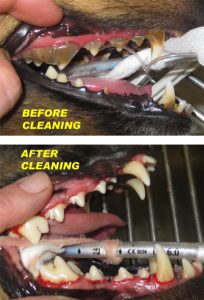
The teeth are first hand scaled then scaled with an ultrasonic dental scaler. Each pet has their own sterilized pack of instruments used for this. Every surface of each tooth is scaled and each tooth is scaled under the gumline. The teeth are then probed and checked for any pockets or looseness to the teeth. Any dental radiographs are taken at this time and diseased teeth are extracted by our veterinarians. The gums are sutured and the remaining teeth are then polished to smooth the surface of the teeth again and slow the accumulation of tartar after the cleaning.
A dental cleaning in your pet, if done correctly, should have all of the above steps performed as this is a very time consuming and meticulous procedure! We have many success stories of dogs and cats that gain a newfound energy after having their teeth cleaned and diseased teeth pulled. Many owners do not realize the chronic pain that their pet has been in until after the dental cleaning. Your pet will be healthier and happier following this procedure!
For the month of February, many veterinarians have promotions and discounts to help owners with scheduling these procedures and to stress the importance of dental health in our pets. Call and set up an appointment today to have your pet’s teeth checked by our veterinarians today and to set up a dental health plan for your pet!

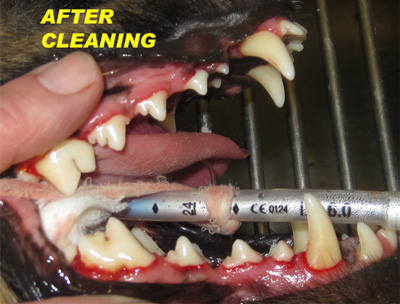
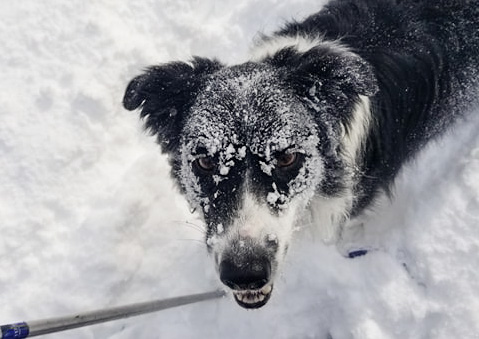
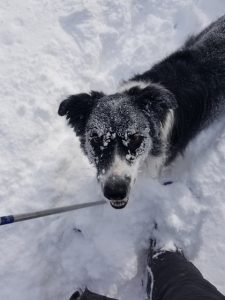
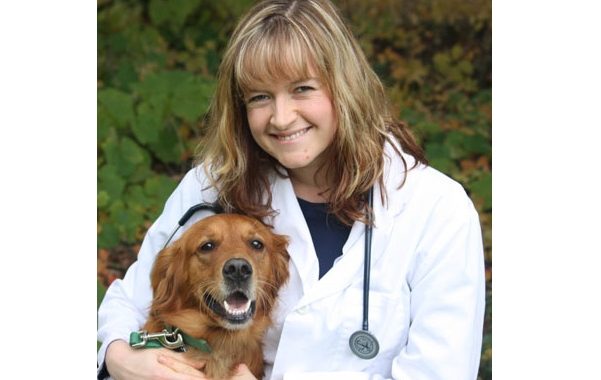
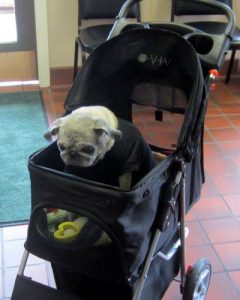
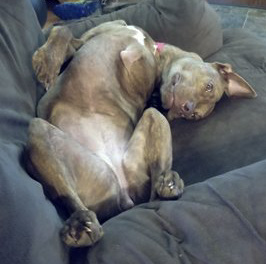
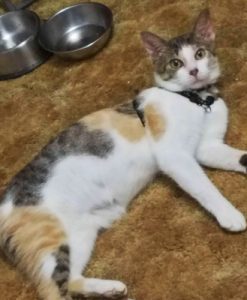 “Stella” was a starved calico- and white-spotted young female kitty that was found wandering on one of our employee’s porches. She was skin and bones and desperate for love and attention. She was brought to the clinic and immediately took a liking to Miranda, one of our veterinary technicians. Upon examination and testing, we found that Stella was carrying four different types of parasites. With medications, food, and some tender loving care, she gained weight and became a healthy loveable cat enjoying her new home with Miranda. Her favorite things to do is eat and cuddle!
“Stella” was a starved calico- and white-spotted young female kitty that was found wandering on one of our employee’s porches. She was skin and bones and desperate for love and attention. She was brought to the clinic and immediately took a liking to Miranda, one of our veterinary technicians. Upon examination and testing, we found that Stella was carrying four different types of parasites. With medications, food, and some tender loving care, she gained weight and became a healthy loveable cat enjoying her new home with Miranda. Her favorite things to do is eat and cuddle!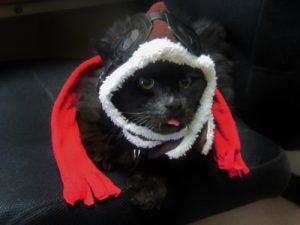 “Licky” is our big black clinic cat. He gets his name because his tongue is always hanging out of his mouth. We adopted him from a dear client who was having health issues. When he came to stay with us, he weighed almost 25 pounds. He was so overweight, he would literally roll himself across our floors to get himself somewhere. He was on long-term medications for asthma and a collapsed lung lobe. He was the poster child for obesity and we were able to get him down to a weight of 13 pounds with a special prescription diet food. Unfortunately, in the last year we discovered that Licky had acquired cancer in his nasal sinus. He has undergone radiation therapy and is on lifelong medications and we will love him as long as he is with us!
“Licky” is our big black clinic cat. He gets his name because his tongue is always hanging out of his mouth. We adopted him from a dear client who was having health issues. When he came to stay with us, he weighed almost 25 pounds. He was so overweight, he would literally roll himself across our floors to get himself somewhere. He was on long-term medications for asthma and a collapsed lung lobe. He was the poster child for obesity and we were able to get him down to a weight of 13 pounds with a special prescription diet food. Unfortunately, in the last year we discovered that Licky had acquired cancer in his nasal sinus. He has undergone radiation therapy and is on lifelong medications and we will love him as long as he is with us!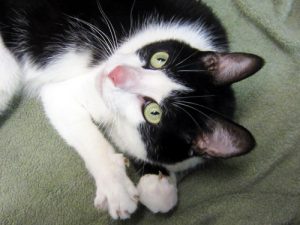 “Benny” was found on our doorstop and left for dead. He was a tiny, little black and white kitten with a broken neck and a heart condition. We were able to bring him back and he became a happy and loveable kitten. He is partially paralyzed but that doesn’t stop him from getting around and living a normal cat life. He has been living with Kathy our surgical technician for the past seven years! His favorite part of the day is when his mom comes home to cuddle him. He also enjoys watching the woodchucks out his window.
“Benny” was found on our doorstop and left for dead. He was a tiny, little black and white kitten with a broken neck and a heart condition. We were able to bring him back and he became a happy and loveable kitten. He is partially paralyzed but that doesn’t stop him from getting around and living a normal cat life. He has been living with Kathy our surgical technician for the past seven years! His favorite part of the day is when his mom comes home to cuddle him. He also enjoys watching the woodchucks out his window.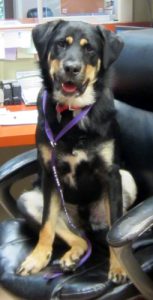 “Gilbert” was also brought to us by the Lakeshore Humane Society. He was a young Rottweiller mix puppy with a broken leg. He was left outside tied up at his previous owner’s home with no medical care for his broken leg. He received proper care and casting at our clinic and ended up going home with Alex, one of our veterinary technicians. He is a spoiled rotten baby and enjoys spending his time on the couch with his feline companions Peach and Poof. He also enjoys playing with his dog friend Karma and lying in the sun.
“Gilbert” was also brought to us by the Lakeshore Humane Society. He was a young Rottweiller mix puppy with a broken leg. He was left outside tied up at his previous owner’s home with no medical care for his broken leg. He received proper care and casting at our clinic and ended up going home with Alex, one of our veterinary technicians. He is a spoiled rotten baby and enjoys spending his time on the couch with his feline companions Peach and Poof. He also enjoys playing with his dog friend Karma and lying in the sun.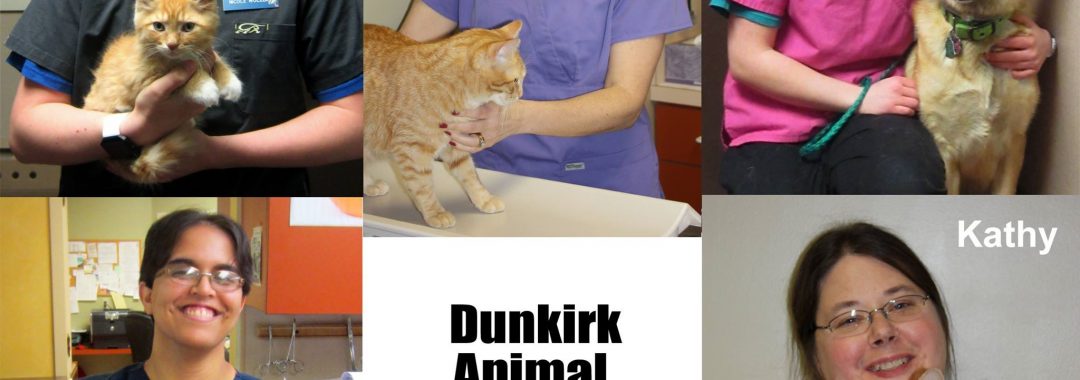
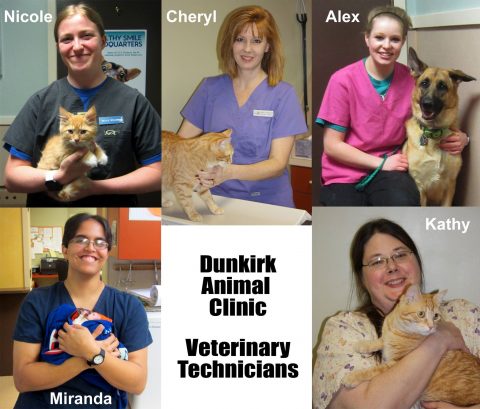 They must then keep renewing their license by completing continuing education courses to continue to learn and grow in their profession. The closest veterinary technician program to our area is at Medaille College in Buffalo.
They must then keep renewing their license by completing continuing education courses to continue to learn and grow in their profession. The closest veterinary technician program to our area is at Medaille College in Buffalo.